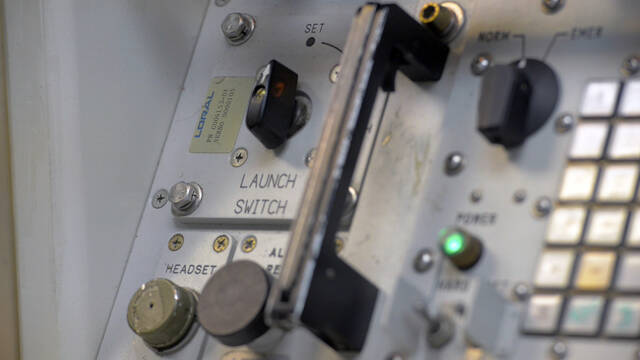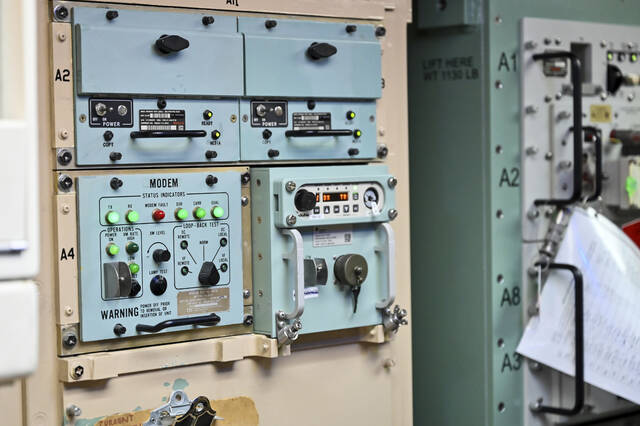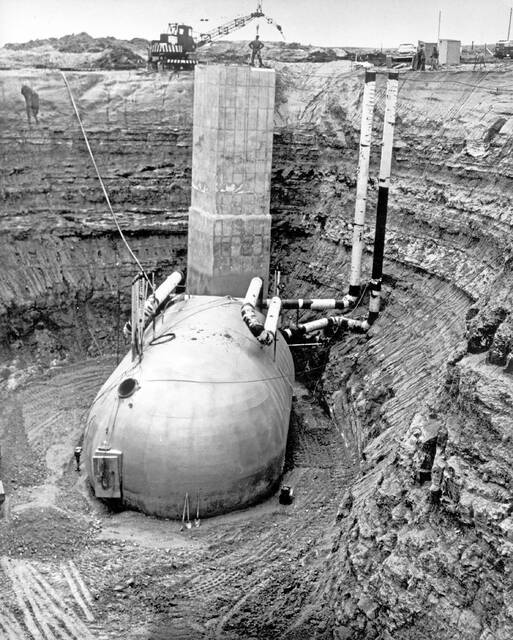A gigantic new ICBM will take U.S. nuclear missiles out of the Cold War-era but add 21st-century risks
F.E. WARREN AIR FORCE BASE, Wyo. — The control stations for America’s nuclear intercontinental ballistic missiles have a sort of 1980s retro look, with computing panels in sea foam green, bad lighting and chunky control switches.
Those underground capsules are about to be demolished and the missile silos they control will be overhauled. A new nuclear missile is coming, a gigantic ICBM called the Sentinel. It’s the largest cultural shift in the land leg of the Air Force’s nuclear missile mission in 60 years.
But there are questions as to whether some of the Cold War-era aspects of the Minuteman missiles the Sentinel will replace should be changed.
Making the silo-launched missile more modern, with complex software and 21st-century connectivity across a vast network, also might mean it’s more vulnerable. The Sentinel will need to be well protected from cyberattacks, while its technology will have to cope with frigid winter temperatures in the Western states where the silos are located.
The $96 billion overhaul involves 450 silos across five states, their control centers, three nuclear missile bases and several other testing facilities.
An overhaul is needed. The silos lose power; their 60-year-old mechanical parts break down often; Air Force crews guard them using helicopters that can be traced to the Vietnam War.
Nuclear modernization was delayed for years because the United States deferred spending on new missiles, bombers and submarines in order to support the post-9/11 wars overseas. Now everything is getting modernized at once. The Sentinel work is one leg of a larger, nuclear weapons enterprise-wide $750 billion overhaul that is replacing almost every component of U.S. nuclear defenses, including new stealth bombers, submarines and ICBMs.
For the Sentinel, silo work could be underway by lead contractor Northrop Grumman as soon as 2025.
The Sentinel is expected to stay in service through 2075, so designers are taking an approach that will make it easier to upgrade with new technologies in the coming years. But that’s not without risk.
“Sentinel is a software-intensive program with a compressed schedule,” the Government Accountability Office reported this summer. “Software development is a high risk due to its scale and complexity and unique requirements of the nuclear deterrence mission.”
Air Force Secretary Frank Kendall has acknowledged the challenges the program is facing.
“It’s been a long time since we did an ICBM,” Kendall said in November at a Center for New American Security event in Washington. It’s “the biggest thing, in some ways, that the Air Force has ever taken on.”
Remove the ads from your TribLIVE reading experience but still support the journalists who create the content with TribLIVE Ad-Free.





